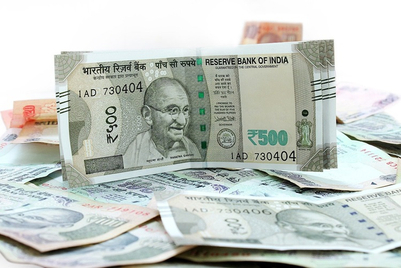
While the Covid-19 pandemic has resulted in deep cuts to adland worldwide and caused a significant decline in linear spend, the full impact is expected to be mitigated by gains made in the digital sphere, a new study from Magna, IPG's research shop reveals. This study also provides a more optimistic measure of worldwide adspend across markets.
According to the latest numbers, revenues for the ad industry are expected to decline by 4.2% in 2020 to US$569 billion, with the linear formats (TV, linear radio, print, out-of-home and cinema) diving by 18% to $232.6 billion, even as digital's 8% gain to $336 billion helped recoup some of these losses.
While Magna and other networks did forecast sweeping adspend losses in the linear category, it was the only outfit to predict moderate gains in the digital market. Digital formats advertising sales (search, video, social, banners) is expected to reach a market share of 59% globally due to an acceleration of digital media consumption (social and video in particular) and ecommerce during the pandemic.
| Advertising growth forecasts - key regions | |||
| Region | 2019 | 2020 | 2021 |
| World (Incl CE) | 5.5% | -4.2% | 7.6% |
| World (excl. CE) | 6.5% | -5.1% | 8.1% |
| North America | 5.9% | -1.5% | 4.2% |
| Latin America | 3.8% | -11.3% | 8.3% |
| Western Europe | 4.6% | -6.3% | 9.1% |
| Central & Eastern Europe | 6.9% | -4.7% | 9.5% |
| EMEA | 5.1% | -6.4% | 8.9% |
| APAC | 5.4% | -.4.9% | 11.1% |
| Emerging markets | 7.1%% | -.4.7% | 11.2% |
| Developed markets | 4.9% | - 4% | 6.4% |
Digital gains grew because consumer brand marketers showed a preference for lower-funnel marketing tools at the expense of branding campaigns, that is classic in any recession time. In the last five years, the share of digital media had grown by 3-4% per year to reach 52% in 2019 and as companies shifted their spend to this category, in 2020, it jumped 7% to 59%.
According to the Magna forecast, the pandemic will hasten this digital transition. A year ago, digital was expected to reach a share of 64% by 2024; now Magna expects that market share to reach 67% in 2024 and 69% in 2025.
"The pandemic triggered a tremendous acceleration in both supply (digital media usage and audiences, ecommerce) and demand (small businesses embracing digital media to keep their business alive, big brands pivoting towards lower-funnel marketing channels as they typically due in recession times)," says Vincent Létang, EVP of global market intelligence at Magna and author of the report.
Search remains the largest digital advertising format (+7% to $164 billion, 49% of total digital advertising) as product search from ecommerce giants (Alibaba, Amazon) offset the slowdown of classic search engines (Baidu, Google), the report notes.
Social media ad formats benefited from an acceleration in penetration and time spent during and since lockdown. An explosion in the volume of ad insertions compensated a lower revenue per insertion, helping social advertising to grow by an expected 17% to $87 billion. Digital video ad spend looks set to increase by 15% to reach $45 billion as strong growth from short-form platforms (YouTube) offset the slowdown of full episode players and outstream video.
| 2020 | 2021 | |||||
| YOY % Growth | June 20 | Dec. 20 | Change | June 20 | Dec. 20 | Change |
| World | -7.2% | -4.2% | +3.0 | +6.1% | +7.6% | +1.5 |
| North America | -4.4% | -1.5% | +2.8 | +4.0% | +4.2% | +0.2 |
| Latin America | -9.9% | -11.3% | -1.4 | +6.7% | +8.3% | +1.6 |
| Western Europe | -10.3% | -6.3% | +3.9 | +7.2% | +9.1% | +1.9 |
| Central and Eastern Europe | -7.7% | -4.7% | +3.0 | +7.6% | +9.5% | +1.9 |
| Emerging Markets | -6.8% | -4.8% | +2.0 | +7.2% | +11.2% | +4.0 |
| Developed Markets | -7.4% | -4.0% | +3.4 | +5.7% | +6.4% | +0.7 |
| Europe, Middle East, Africa | -9.8% | -6.4% | +3.4 | +7.1% | +8.9% | +1.7 |
| Asia Pacific | -8.5% | -4.9% | +3.6 | +8.1% | +11.1% | +3.0 |
| Total TV | -11.9% | -12.2% | -0.3 | 1.3% | +2.6% | +1.3 |
| Total Digital | +0.9% | +8.2% | +7.3 | 9.5% | +10.4% | +0.9 |
Meanwhile, the pandemic pallour was evident in the struggles faced by the linear market, where global ad spend is predicted to shrink by 17.7%, worse than the 16% fall forecast in June 2020. Television remains the largest linear advertising channel with $149 billion in advertising revenues in 2020 and ad sales will shrink by 12% this year for this medium as spending buckled due to the cancellation of many TV campaigns in key verticals (eg automotive) and the postponement of major sports events.
Other segments did even worse. Print, radio and OOH ad sales are expected to decline 24% to 25%. OOH has been hurt by the decline in consumer mobility, traffic and audience too, and theatre closures will cause cinema advertising to decline by 66% this year.
Meanwhile, given the widespread rout of adspend, it is no surprise that almost every market and region has felt the full force of the pandemic. Latin America will experience the worst downturn (-11.3%), followed by EMEA (-6.4%). Asia Pacific markets look set to shrink by an average -4.9% while North America appears to be the most resilient region (-1.5%) helped by the scale of digital advertising and record levels of political spending.
In total, 66 of the 70 markets analysed by Magna are expected to shrink this year, with two markets growing nominally due to hyper-inflation (Argentina and Ukraine) and two markets showing real albeit moderate advertising growth: China (+0.2%) and Taiwan (+2.0%). The two largest, US (-1.3%) and China (+0.2%) were also the most resilient this year, while the rest of the top ten markets expected to decline between 4% and 8%.
For APAC, adspend decline is compounded by the overhang of the trade war with the US and China and political unrest in Hong Kong. In this challenging environment, APAC media owners' advertising revenues are predicted to decrease by an estimated -4.9% in 2020 to $174 billion. This is the weakest APAC performance since 2009 (-4.0%) and it is in-line with the global ad market decline in 2020 (-4.2%). For full-year 2020, linear advertising ad sales look set to decline by 19%. This is far worse than 2009’s -5.7% performance for linear advertising. The difference for total APAC growth is that in 2009 linear advertising formats represented 87% of total budgets; in 2020, linear advertising formats will only represented 42% of total advertising spending. Revenues from digital advertising formats slowed down compared to 2019 (+15%) but will still grow by an estimated +9.0% in 2020.
"Notwithstanding the pandemic and accompanying economic instability, there has been a resilience across Asia that has meant spend in the back half of the year came back as visibility and confidence grew," said Leigh Terry, CEO IPG Mediabrands APAC. "There is a degree of cautious optimism that is reflected in the projected growth numbers."
Major events, if they can finally take place (Summer Olympics in Tokyo, UEFA Football Championship in Europe, and the Dubai World Expo) will also fuel the stabilisation and recovery in marketing budgets and advertising spending. Magna raises its previous forecast (June: +6.1%) by 1.5 percent point. All regions will recover to some degree: APAC: +11%, LATAM: +9%, EMEA: +8%, North America: +4%.


.jpg&h=334&w=500&q=100&v=20250320&c=1)


.png&h=334&w=500&q=100&v=20250320&c=1)




.png&h=334&w=500&q=100&v=20250320&c=1)





.png&h=268&w=401&q=100&v=20250320&c=1)


